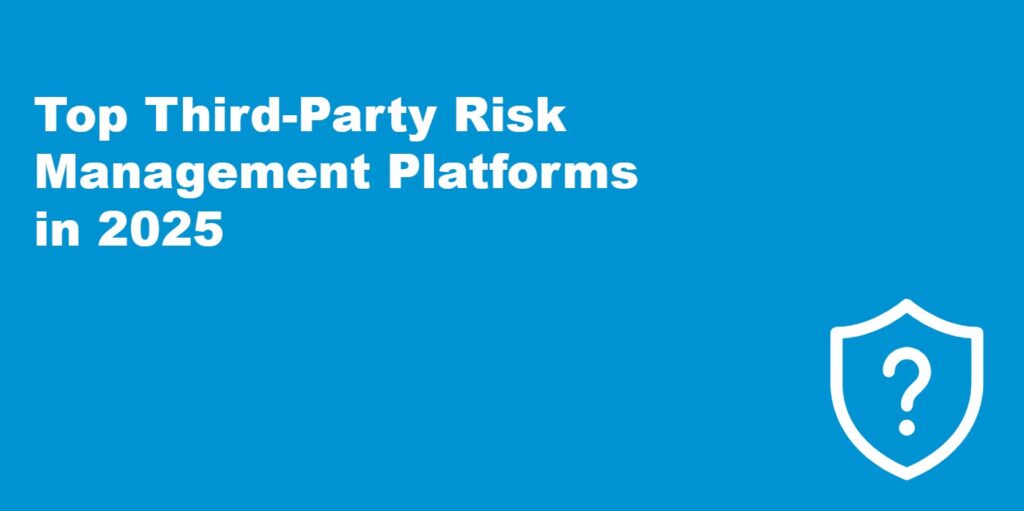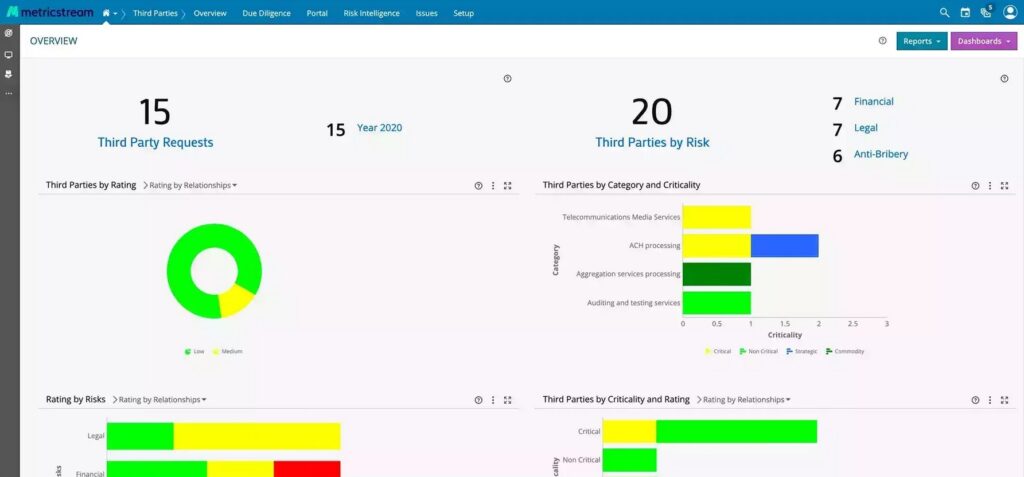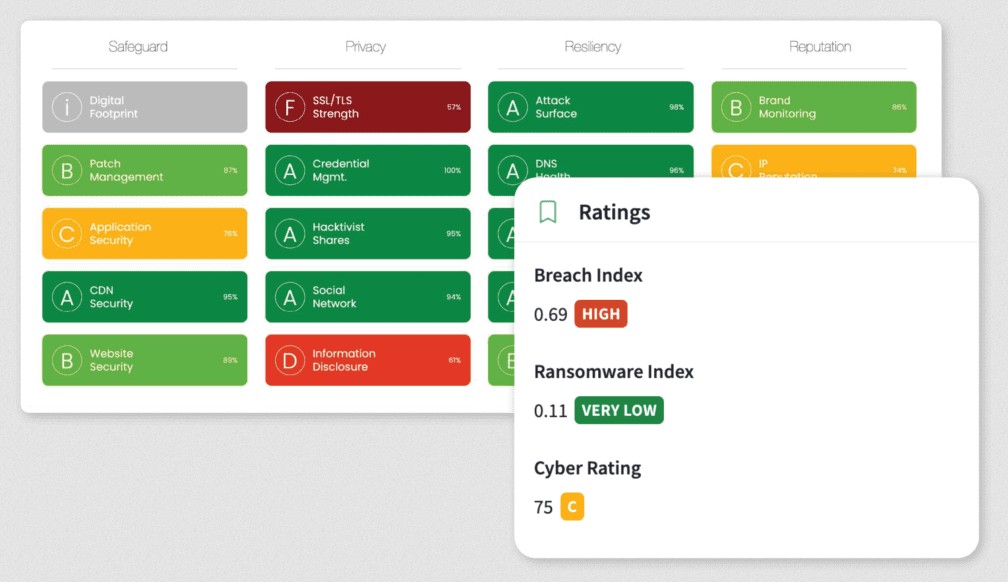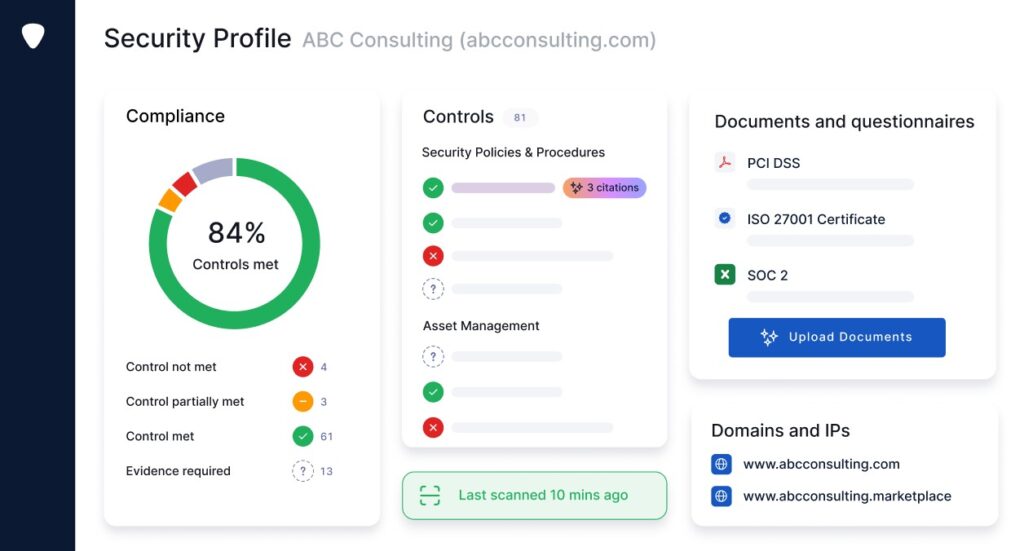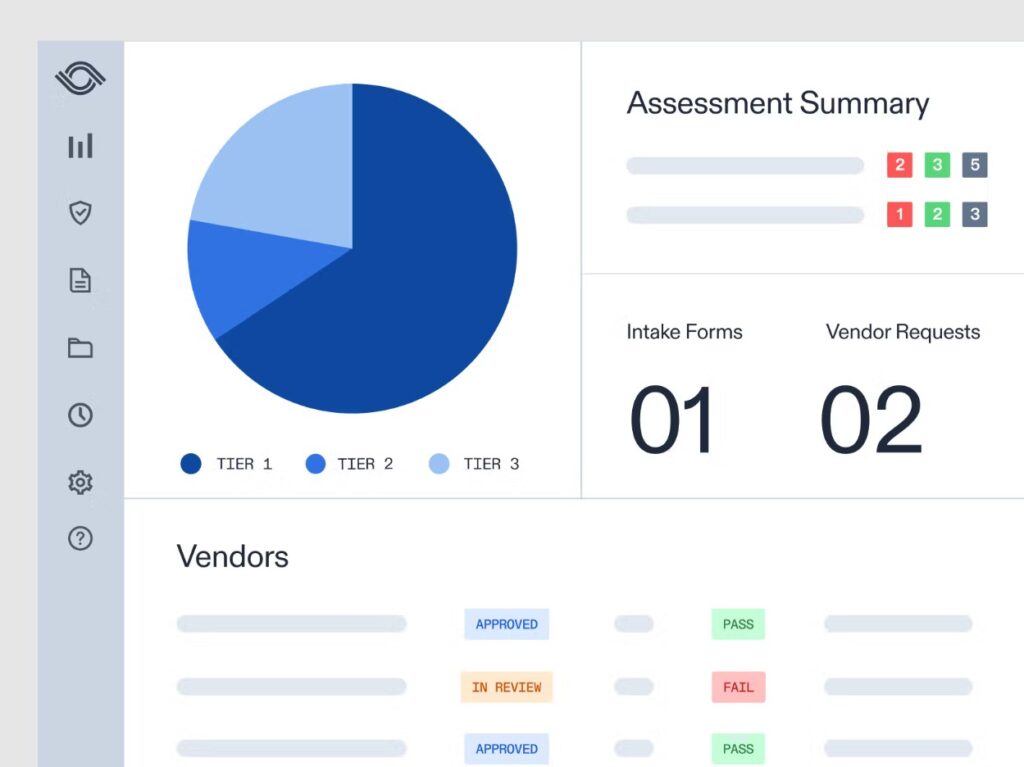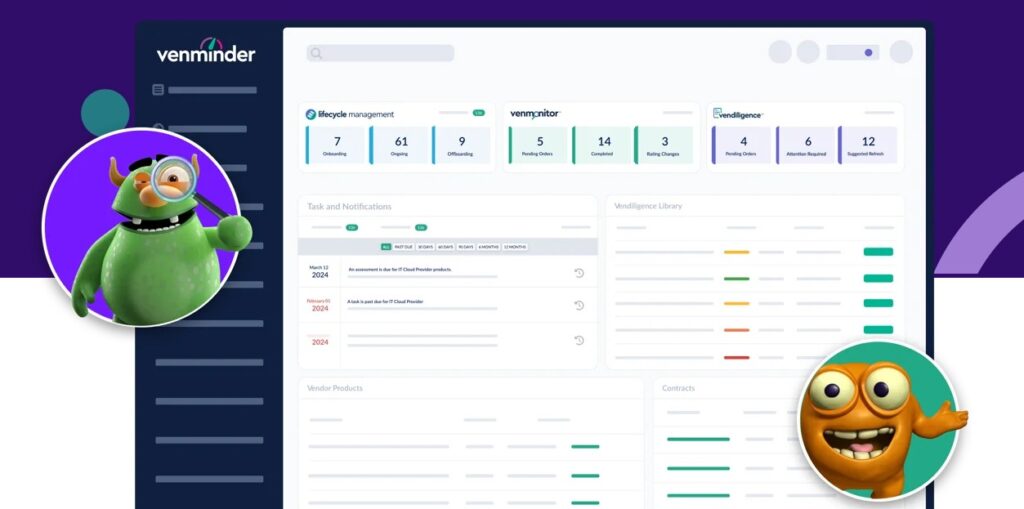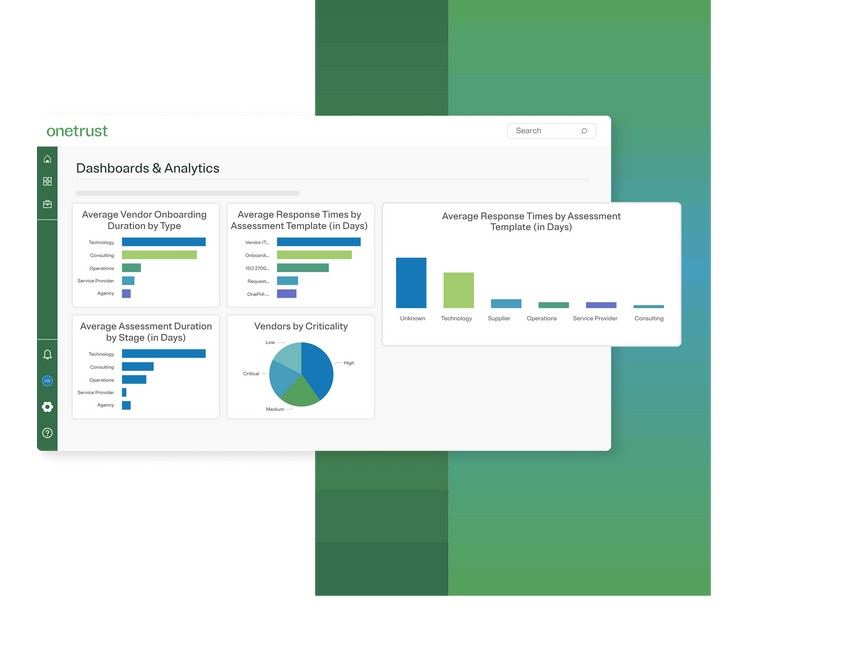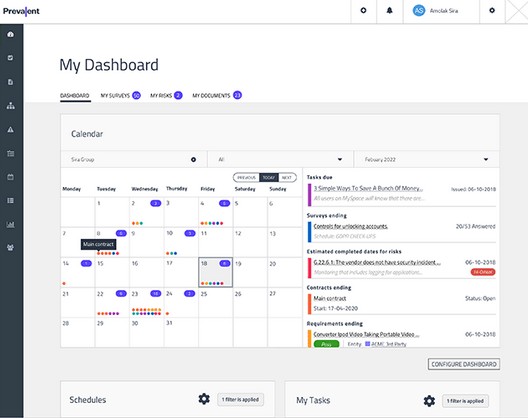No organization works in isolation today. Regardless of the size and industry, every organization depends on suppliers, vendors, contractors, and other third parties that offer specific products or services. While these third-party providers improve efficiency of an organization and open up new opportunities for growth, they also come with risks.
To mitigate these risks, organizations are turning to Third-Party Risk Management (TPRM). Read on as we discuss TPRM in detail and the top platforms in this space.
What is Third-Party Risk Management (TPRM)?
Third-Party Risk Management (TPRM) includes identifying, assessing, monitoring, and mitigating risks associated with external business associates, vendors, suppliers, contractors, and other third parties that an organization works with. These risks can include cybersecurity threats, compliance violations, operational disruptions, financial risks, and more.
Why TPRM?
With a comprehensive TPRM framework, policies, and platforms, you can identify and address risks before they impact your organization. Below are the key benefits of TPRM.
- Protects against data breaches, digital scams, phishing attacks, and cyber threats.
- Helps comply with regulations like GDPR, HIPAA, CCPA, etc.
- Reduces the chances of downtimes and disruptions to business operations.
- Protects against reputational damage.
- Sets clear expectations and accountability.
- Tracks performance and vendor risks over time to help with decision-making and negotiations.
- Supports the creation of a robust incident response plan.
However, to achieve the above benefits, your policies must be supported by the best-fit TPRM platform that can continuously monitor and report violations.
Let’s now briefly understand the features of the top TPRM tools.
1. MetricStream
MetricStream is a popular TPRM that gathers and analyzes data to help you make the right sourcing decisions for your organization. At the same time, it provides comprehensive visibility into your third-party providers and their business associates called the fourth-party providers.
Source: MetricStream
Key Features
- Automates the process of gathering and analyzing information.
- Creates extensive third party profiles that include bank details, assessments, contracts, certifications, risk rating, due diligence reports, and more.
- Simplifies third-party intake through a user-friendly portal and simplified onboarding processes.
- Continuously assesses third-party data from global sources and identifies red flags.
- Conducts regular audits, including onsite ones if needed, to assess third-party policies and performances.
Pros:
- Highly scalable, making it ideal for large enterprises that want to expand their third-party network.
- Supports strong regulatory compliance.
- Offers real-time insights into third-party risks.
- Reduces onboarding time by 80% and assessment costs by 50%, as per the website.
Cons:
- Complex to implement.
- Requires training and expertise.
2. LogicGate
The LogicGate TPRM platform identifies, assesses, and quantifies third-party risks to safeguard your business and reputation. Its automated processes help meet the compliance requirements as well. An advantage of this platform is that it connects all the vendor’s controls, audits, and due diligence in a single platform to give you comprehensive visibility.
Source: LogicGate
Key Features
- Automates repetitive vendor onboarding, assessment, and offboarding workflows.
- Integrates well with tools like Jira, Slack, and Microsoft 365.
- Aggregates risk intelligence from providers like Black Kite and RiskRecon to take a proactive risk management approach.
- Sends assessments and questionnaires to third parties at the specific intervals and based on custom logic.
- Uses traditional quantification techniques like Monte Carlo simulations to offer a financial context to risk decisions.
Pros:
- Supports industry standards like SIG, NIST, CSF, and CAIQ.
- Provides the financial impact of third-party risk to stakeholders to strengthen support.
- Out-of-the-box assessments and questionnaires that save time and effort.
- Customizable reports and dashboards.
Cons:
- Requires additional configurations and access to other tools.
- Learning curve.
3. UpGuard
UpGuard offers extensive vendor risk assessments to strengthen security and improve the efficiency and outcome of your TPRM programs. With this tool, you can customize risk assessments based on the vendor’s exposure to risks and the criticality of your relationships.
Source: UpGuard
Key Features
- Uses AI-driven document analysis to automate monitoring and risk rating.
- Provides the option to remediate critical risks and waive the non-critical ones.
- Generates risk assessment reports in under 60 seconds, according to the website.
- Offers near-instant security insights.
Pros:
- Centralized dashboards.
- User-friendly interface.
- Automated risk assessments.
- Comprehensive risk visibility.
Cons:
- Focus is more on cybersecurity than compliance.
- Limited integrations.
4. AuditBoard
AuditBoard is one of the leading TPRM platforms that provide a visualization of the risks facing your organization from third-party vendors. With its custom processes, you can streamline onboarding and better evaluate the vendors against your company’s policies. Moreover, you can build an inventory that can be used as a reference at any time.
Source: AuditBoard
Key Features
- Provides visibility into vendors’ risks and performance with real-time data.
- Supports collaboration across teams.
- Streamlines vendor questionnaires with AI-powered assessments that can be customized based on your relationship.
- Analyze existing security and compliance reports.
- Automatically sends risk-assessment questionnaires based on changes in the vendors’ control environments.
Pros:
- Intuitive and easy-to-use.
- Integrates well with many platforms.
- Offers comprehensive audit, risk, compliance, and ESG management.
- Scalable for organizations with large vendor networks.
Cons:
- Less emphasis on cybersecurity.
- Complex for small businesses.
5. Venminder
Venminder is a user-friendly platform for managing third-party risks. It handles end-to-end processes, from onboarding to monitoring and offboarding, with high levels of efficiency. Also, it provides the versatility you need to customize agreements and risk assessments based on the vendor’s profile and your relationship.
Source: Venminder
Key Features
- Uses outsourced due diligence reports to create relevant control assessments, that in turn, can better identify the risk profile of vendors.
- Offers real-time monitoring across multiple risk domains.
- Creates customizable and automated vendor questionnaires to save time and effort.
- Stores all contracts in a centralized location for better visibility and control.
- Provides managed services and consulting.
Pros:
- Extensive complementary resources.
- Continuous monitoring.
- Complies with leading regulations.
- Pre-built risk assessment templates.
Cons:
- Not flexible enough for all industries, especially those outside of finance and healthcare.
- Reporting requires additional configuration.
6. OneTrust
OneTrust is a GRC platform that also offers advanced TRPM capabilities. It streamlines every aspect of the third-party lifecycle to provide complete visibility. You can choose from its out-of-the-box assessment templates or build one from scratch to automate these assessments. The advantage is that these assessments ask the right questions to better understand vendor risks.
Source: OneTrust
Key Features
- Centralizes all information gathered about vendors to help build a detailed profile.
- Offers mitigation recommendations and workflows to reduce the impact on your organization.
- Continuously monitors third-party performance.
- Its customizable dashboards provide the required information to authorized employees.
- Makes it easy to export brandable PDF reports to external stakeholders.
Pros:
- Strong focus on compliance.
- Integrates well with other OneTrust tools.
- Highly scalable.
Cons:
- Learning curve.
- Elaborate setup and customization.
7. Centraleyes
Centraleyes is a next-gen TRPM that leverages automation and AI-driven insights to assess and categorize hundreds of vendors. You can see all the required information on a centralized dashboard to make informed decisions.
Source: Centraleyes
Key Features
- Helps organizations achieve cyber resilience and compliance.
- Uses automated workflows and surveys to gather the required information.
- Combines existing data about vendors with live threat intelligence to better understand the risk profile of every vendor.
- Supports faster remediation.
- Automates manual work to save time and effort.
Pros:
- Proactive decision-making using AI-driven risk management strategies.
- Intuitive user interface and dashboards.
- Strong focus on cybersecurity.
- Scalable.
Cons:
- Fewer integrations.
- Limited when compared to other leaders in this space.
8. Prevalent
Prevalent is a capable TRPM platform that combines intelligence with automation to identify and mitigate risks related to third-party vendors. In addition, it also offers unified vendor management, risk assessment, and threat monitoring to help assess risks from vendors.
Source: Prevalent
Key Features
- Provides complete visibility into third-party risks.
- Combines assessments with external threat data to identify emerging risks.
- Supports remediation and mitigation processes.
- Generates detailed reports of the risks.
- Offers on-demand risk intelligence for more than 10,000 vendors.
Pros:
- Supports many compliance frameworks.
- Scalable.
- Real-time insights.
- Covers multiple domains like cybersecurity, financial, and operational.
Cons:
- Complex for organizations testing TRPM.
- Steep learning curve.
Thus these are the top third-party risk management platforms that can provide visibility into your vendors’ risks and operations.
Choosing the Right TRPM
Choosing the right TPRM platform is a key decision that protects your organization from risks, non-compliance, and reputational damage. While evaluating different platforms, consider factors like your organization’s size, industry, and risk management goals.
For example, UpGuard and Centraleyes are good choices for getting security monitoring and threat intelligence and can work well if you’re looking for a cybersecurity-focused risk management. Similarly, OneTrust, Venminder, and MetricStream are comprehensive when it comes to compliance tracking. LogicGate and Prevalent offer AI-driven assessments and customizable workflows, while AuditBoard and MetricStream encompasses wider GRC capabilities and can provide integrated risk and compliance management.
Evaluate your specific risk management needs, budget, and integration requirements before making a decision. We hope these platforms act as a good starting point for further research.
